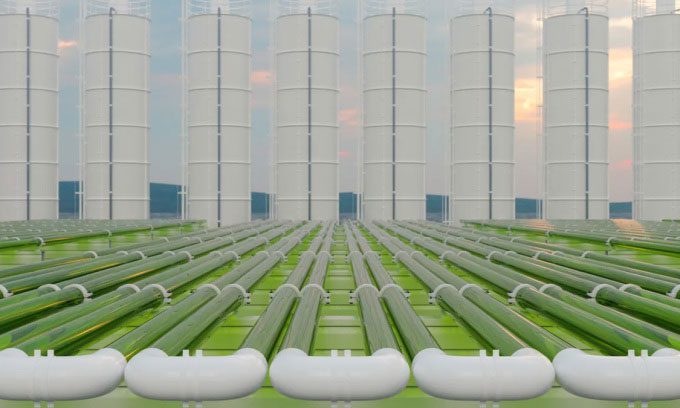An integrated plant that eliminates 50,000 tons of CO2 annually while producing fresh water from seawater will be built in the Daesan Industrial Complex.
As many countries aim for carbon neutrality, experts are working hard to develop methods for capturing and utilizing carbon emissions. Carbon capture facilities help reduce the amount of carbon released into the atmosphere. In contrast, Direct Air Capture (DAC) technology focuses on removing existing CO2 from the atmosphere. During its operation, DAC can produce fresh water as a byproduct.

Simulation of the CO2 capture process from the air and its use in product manufacturing. (Image: onurdongel/iStock).
Typically, these technologies are deployed separately with the sole aim of reducing carbon emissions. However, Capture6, a DAC company, is utilizing this technology to achieve multiple goals beyond just CO2 capture, as reported by Interesting Engineering on January 17.
The Daesan Industrial Complex contributes to 40% of South Korea’s petrochemical production. However, severe droughts in recent years have led to a critical water shortage in the area, necessitating reliance on external water sources.
The South Korean company K-water is constructing a desalination plant to meet water demand. However, as a petrochemical hub, the Daesan Industrial Complex emits up to 17 million tons of CO2 equivalent (CO2e) annually. Capture6’s DAC technology presents an opportunity to address both issues simultaneously.
The new integrated plant at the Daesan Industrial Complex will combine Capture6’s Octopus Project with K-water’s desalination facility. Seawater from this facility will be used to create solvents for carbon removal in the DAC process. The plant is expected to eliminate 50,000 tons of CO2 each year while also producing fresh water from seawater. This will be the world’s first facility of its kind.
Capture6 also aims to address environmental concerns associated with desalination plants. Typically, the desalination process generates concentrated brine, which can harm ecosystems when discharged into the sea. Capture6 plans to use the concentrated brine to produce chemicals such as hydrochloric acid and calcium carbonate, which are essential for various industrial activities in South Korea.
Previously, these substances were often produced using fossil fuels and imported into South Korea. By producing them locally from the waste of another process, Capture6 helps reduce the environmental impact of industrial activities in the region.




















































